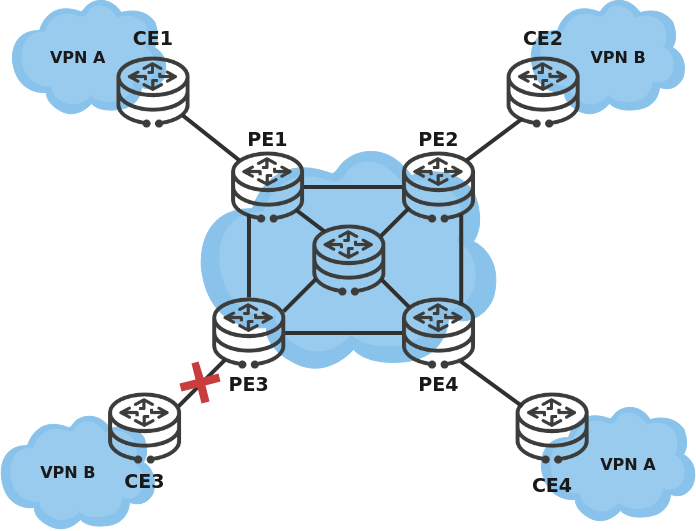What Is NSR?
Non-stop routing (NSR) is a reliability technology that ensures uninterrupted data transmission during an AMB/SMB switchover. AMB is short for active main board, and SMB for standby main board. NSR backs up routing and forwarding information to the SMB; so if the AMB of a device fails and the SMB needs to take over, information backup and recovery can be implemented without peripheral devices. This is because NSR prevents any loss of neighbor and topology information as well as interruptions to neighbor relationships.
NSR vs NSF
Non-stop forwarding (NSF) ensures uninterrupted data forwarding if a device's control plane fails. NSF is implemented based on the graceful restart (GR) mechanism. GR ensures service continuity when a device performs an IP/MPLS restart or AMB/SMB switchover. However, GR requires cooperation from peripheral devices to back up and restore routes and other information.
The following table lists the requirements of NSR and NSF on hardware, software, and protocols as well as their advantages and disadvantages:
Type |
NSR |
NSF |
|---|---|---|
Hardware |
|
NSF has the same hardware requirements as NSR. |
Software |
|
NSF has the same software requirements as NSR. |
Protocol |
NSR has no special protocol requirements. |
Various network protocols, including routing protocols (such as OSPF, IS-IS, and BGP) and other protocols (such as LDP and RSVP) must be extended to support GR. |
Advantages |
|
NSF loads are light and therefore NSF does not degrade system performance. |
Disadvantages |
|
|
After an AMB/SMB switchover, you can adopt either NSR or NSF for a specific protocol. If you enable NSR, then the device can also fuction as the GR helper for its neighbor in the GR process. This ensures the highest possible service reliability on each node across the network.
How Does NSR Work?
NSR can be used when a system fault or the network administrator (during system upgrade and maintenance) triggers an AMB/SMB switchover.
NSR is implemented in three phases:
- Batch backup: NSR is automatically enabled after the SMB starts. The SMB receives routing and forwarding information from the AMB in batches. However, at this point the NSR cannot yet perform an AMB/SMB switchover.
- Real-time backup: Real-time backup starts after batch backup is complete. All updates to the control and forwarding planes are backed up from the AMB to the SMB in real time. The SMB can take over traffic from the AMB whenever necessary.
- AMB/SMB switchover: After real-time backup is complete, if the AMB fails, the SMB detects the failure through hardware status and becomes the new AMB; it then uses the data backed up from the original AMB to forward traffic. In addition, the new AMB sends information that changed during the AMB/SMB switchover to interface boards, thereby ensuring reachable routes and uninterrupted traffic forwarding.

NSR implementation
NSR Application
Service continuity technologies are typically applied on provider edges (PEs) deployed at the edge of a carrier's network, especially when customer edges (CEs) are connected to the network. Without service continuity technology, user services on a PE will be interrupted by an AMB/SMB switchover if the only PE fails or due to maintenance (for example, software version upgrade).
NSR uses an internal mechanism to ensure that the routing protocol and neighbor statuses are consistent in the control planes of the AMB and SMB. Therefore, NSR does not require CEs to support NSR. The following figure illustrates a network where NSR can be deployed to provide high reliability guarantee for critical user services.

NSR application on a carrier network
- Author: Liu Xihan
- Updated on: 2024-02-27
- Views: 12057
- Average rating:






